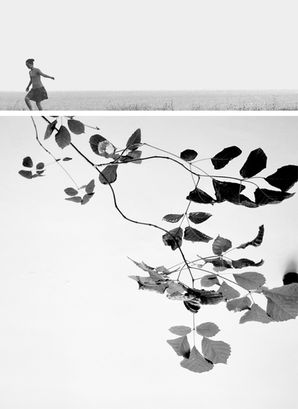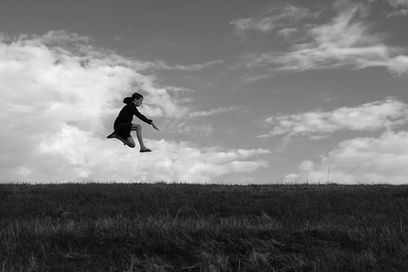
UNDER THE SILHOUETTES
October 14, 2022
INTERVIEW
PHOTOGRAPHY Asen Georgiev
INTERVIEW Melanie Meggs
Asen Georgiev always felt a special connection with photography. As a child growing up in Bulgaria, he was drawn to the magical sound of his parents’ old point and shoot film camera. Little did he know, that that shutter sound was the beginning of a lifelong exploration of street photography.
Today, Asen’s vivid photographs of people and their environments captivate the minds of many. They depict a world full of beauty and imperfection all at once, and show us the world through Asen’s eyes. Every time Asen goes out to take photos he feels like he is part of something bigger, but at the same time he can just be himself. His photographs have taken him to places he would have never imagined. From the lively streets of Sofia to the small villages in the Bulgarian countryside, every trip is an opportunity to discover something new and to capture it with his camera.
Asen Georgiev’s works are a testimony of his love for street photography and how it has changed his life. His story will inspire you to explore the world around you and to capture its beauty through the lens of your camera.

“Street photography can be inside, outside, you can have people in it or only buildings. It can be anything. This can be very challenging, though. In my opinion the biggest limitations to creativity is the lack of limitations. It's basically a love-hate relationship.”
IN CONVERSATION WITH ASEN GEORGIEV
THE PICTORIAL LIST: Hello Asen, please tell us about yourself.
ASEN GEORGIEV: I was born and raised in Sofia, the capital of Bulgaria, a tiny little country in south eastern Europe. Where I grew up has massively influenced my work. As the most underdeveloped country in the European Union, there is a lot of poverty in Bulgaria. It was worse when I was little but it's still there, even more than 20 years later. Even now when you leave the bigger cities you see people living on the poverty line and struggling everyday. I guess that's why I was always fascinated by chaos and all sorts of different people from different layers of society. For that same reason I learnt that people are people no matter what's their income, where they live or what they do. That's one of the reasons why I got into street photography. I wanted to be able to capture life in the city, in its beauty and disfigurement.
I'm still living in Sofia currently. I just finished my undergrad in marketing and am currently working as content marketing specialist in a startup, and doing freelance copywriting and marketing gigs whenever I get the chance.
TPL: What drew you to photography? What was that moment that you decided to pick up a camera? Talk to us about your photographic experience on the streets of Bulgaria.
AG: When I was little my parents had an analog point-and-shoot Beroflex camera and I adored clicking the shutter. Eventually I found out that this sound meant that a picture was taken. When my parents were coming back with the developed negatives from the photo studio, I loved staring at them and trying to invert the colors in my mind.
Some years later we had a field trip organized from school and they let me take that same camera with me. I shot an entire roll of film for the few hours we were there and I loved every minute of it.
Fast forward a few more years and smartphone cameras were getting pretty decent. I remember taking photos for an entire afternoon at a nearly deserted beach that my family and me went to and being very happy while experimenting with different compositions. Since then photography has constantly been a part of my life in one way or another.
The year after my dad retired as a firefighter and bought me my first DSLR. It was a Nikon D3100 that really sparked my interest in photography. One more year later, in high school we had a complimentary photography class taught by a photojournalism lecturer from the Sofia University.
That was my first contact with street photography and photojournalism. He was telling us stories about Sebastião Salgado, Henri Cartier-Bresson, Robert Capa, Garry Winograd and many more of photography's greatest. That's when my street photography journey began.
Photography on the streets of Bulgaria can be very challenging at times. Not because people don't like it, even though that also tends to happen, but because a big part of the cities are the same. That's what communism does to your country after all. It loses a big part of its personality, loses many of its resources and is left bankrupt.
Lately I find myself walking through neighborhoods in Sofia that I haven't photographed before. In summer it's great, there are always people outside, a lot of stuff going and plenty of scenes to photograph. In winter, though, it's dead. Everyone rushes home and there's only action at major bus stops and subway stations. But that's also got its charm.
TPL: What is it that you love most about street photography?
AG: The freedom. Street photography can be inside, outside, you can have people in it or only buildings. It can be anything. This can be very challenging, though. In my opinion the biggest limitations to creativity is the lack of limitations. It's basically a love-hate relationship.
TPL: What are some of your most favorite places you find inspiration to explore through your photography, and what draws you there?
AG: In 2021 I was lucky enough to be able to spend an entire month in Turkey. It's a breath-taking place. Not only Istanbul too. Every corner of it. There's always something going, there are people everywhere, selling, playing, running, smiling, doing all sorts of stuff. Before photography I wasn't nearly as attracted to Turkey as I am now, so I guess that's the place that I explored because of it.
TPL: When you take pictures, do you usually have a concept in mind of what you want to shoot, or do you let the images just "come to you", or is it both? Please describe your process.
AG: It's very rarely that I'll shoot with a concept in mind. And even when there's something of a concept that I'm trying to shoot, it's very vague, so it's fair to say that I shoot what comes to me.
I think my process is like any other street photographer's. I simply walk around. Usually my camera is easily visible and I never try to hide the fact that I'm taking a picture. If you try to hide it people are going to think you're doing something bad and either get uncomfortable or get mad at you. After going out to shoot I usually wait a few days or a week before editing the photos. That's something I learnt after starting to shoot film more than 2 years ago. The more you slow down, the more likely you're to end up with an ok shot.
I like to disconnect. I want to be there and then and nothing else to exist. I often want to be invisible and simply capture what's interesting.

TPL: Do you have any favourite artists or photographers you would like to share with us, and the reason for their significance?
AG: Oh yeah, plenty. When it comes to photography, the photographers that have impressed me the most are Alex Webb, David Alan Harvey, Robert Frank and Sebastião Salgado. There are more, of course, but these are the ones that first come to mind. I believe the reasons why they're so significant is obvious to anyone who's seen their work. It's simply genius. It's pure art.
About other artists... I'm very passionate about music so there are a lot of musicians that inspire me. There's the whole grunge era with Chris Cornell, Eddie Vedder, Layne Staley, and of course, Kurt Cobain. The movement they created, their music, their passion, their inability to give a fuck... It's unbelievable!
TPL: If you could just choose one photographer to shoot alongside for a day...who would you choose? And why?
AG: I guess they have to be alive, right? That would be either Sam Abell, Alex Webb or David Alan Harvey. I put Sam Abell there as I watched a lecture of his online where he explained his process. The way he decides to tell a story, how he composes his shot, the dedication... All of it.
Alex and David because they're my biggest inspiration. I want to see how they work in the field, how they see the world, how they interact with it. It would be like seeing magic.
TPL: What was the first camera you ever held in your hand, brought to eye, and released a shutter on? What is the camera you use now? Does the equipment you use help you in achieving your vision in your photography? What is on your wishlist?
AG: I think it was that point-and-shoot Beroflex camera my parents had. I still have it too and it still works. I actually took one of my favorite photos with it last year. Now I mainly shoot with my Fuji XT-20 and my Ricoh GR III. I also use a few analog cameras, among which a Nikon FG-20 and a Russian Zorki 4.
I think different equipment gives a different vibe to your work. If you shoot film, your photos will have more imperfections. That gives a lot of personality though. Digital is different. It gives you more room for creativity and kind of takes you closer to your subject. They're both great though.
When it comes to wishlist...Well, I've wanted to get a Leica, be it digital or analog, but I don't think that's ever happening, with their prices always going up. I've also been considering getting a Fuji X100 series camera at some point.
TPL: What role has the digital community played in your photography journey?
AG: As a 25-year old my generation is the last that saw an analog world. This is great as it makes me appreciate how much freedom the digital era is giving us. Especially when it comes to the photography community.
I'm glad to say that lately the street photography community in Bulgaria has been steadily growing. If it wasn't for the digital era, I wouldn't have met any of the other Bulgarian street photographers. And there's so much quality there. It would've been a shame to miss it.
About my photography journey...well, the digital community helps you understand that the work you do is average at best. It helps you ground yourself and not think you're something you're not.
TPL: What are some of your goals as a photographer? Where do you hope to see yourself in five years?
AG: That's a tough one. I definitely want to keep shooting. I want to work on project, document life in all corners of the world, hopefully work with embassies. There are a few projects I have taking shape in my head and I hope I'll be able to complete at least some of them within the next five years.
TPL: “When I am not out photographing, I (like to)…
AG: I like to disconnect. I want to be there and then and nothing else to exist. I often want to be invisible and simply capture what's interesting.”

Asen Georgiev's story shows us the power of street photography and how it can take you to places you never imagined. His photographs capture the beauty and imperfection of the world in a way that can only be seen through his eyes. His story will inspire you to explore the world around you and to capture its beauty.








































